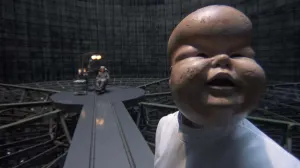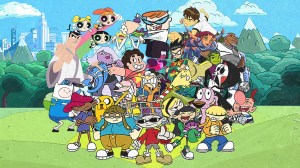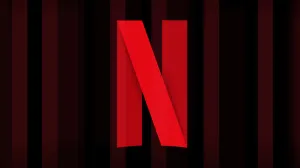Here’s a stone-cold take: Transformers: The Movie, the 1986 animated feature film, is the best Transformers movie to date.
Videos by ComicBook.com
Ever since Michael Bay released his first Transformers movie more than ten years ago now, fans and critics have been trotting out the beloved Transformers: The Movie as a sign of everything Bay has done wrong — and those fans and critics are, generally speaking, correct.
That isn’t to say that Bay’s Transformers films are completely without merit, but there are several legitimate reasons that many audiences respond better to Transformers: The Movie than they do the later, live-action/CGI iterations of the concept.
This isn’t a cheap hit piece on Bay’s Transformers; there are storytelling and technical elements that simply work better in Transformers: The Movie than Bay’s films have managed to put together so far, but that isn’t to say that you’re wrong for enjoying Bay’s movies or that there is no inherent value to them.
For a much deeper look at the Bayformers franchise, what makes it tick, and why some things do or do not work for the audience, check out Lindsay Ellis’s The Whole Plate, a look at film theory through the lens of Bay’s Transformers franchise.
What follows is a look at some of the things Transformers: The Movie did that, thirty years on, still hold up and surpass the big-budget blockbusters that have come after it.
But of course, that was a traditionally-animated film with a very different design aesthetic, different strengths and weaknesses. Is there anything that the current crop of live-action movies could learn from it?
Well, read on and decide for yourself…!
IT WAS A VERY SPECIAL EPISODE
The thing about Transformers: The Movie is that it was a feature-length, better-animated version of the popular Saturday morning cartoon.
That means it came with history, backstory, established relationships, and more already intact. While the movie did take at least a little time to introduce most of the characters and their dynamics — and while it needed to establish about a dozen entirely new characters for the film itself — the plot made sense going in and that the stakes were well-established.
It also meant that raising the stakes was a fairly easy and intuitive thing.
Where the live-action movies had to establish the Transformers and then also establish a semi-related reason for them being on Earth/reason for the story to happen all in the first film, the animated movie benefits from the existing series doing most of the heavy lifting.

THE CASTING
You can’t really knock most of Michael Bay’s casting; having guys like Stanley Tucci, John Turturro, John Goodman, Steve Buscemi, and Anthony Freaking Hopkins came into Transformers land is a pretty clear indication that he attracts talent.
The problem is, he largely has nothing for that talent to do.
The characters aren’t the main characters in Bay’s Tranformers movies; the spectacle is. That means lots of Tranformers — and the ones who are the most interesting and talk the most, by the way, don’t have celebrities voicing them.
In Transformers: The Movie, they had a similar dilemma: the main characters were all people who appeared in the regular cartoons, and so they were cast using prolific voice actors, but nobody whose name was particularly marketable on a movie poster.
The solution? Well, they added a bunch of new characters for the movie, and those characters were voices by the likes of Robert Stack, Judd Nelson, Orson Welles, and Leonard Nimoy. It gve them fresh blood, marketable names, and also a whole batch of new toys to sell when they started taking out some of the first generation Transformers in a brutal battle in the movie’s first act.

THE STAKES
Earlier this week, there was an article floating around that talked about the brutal deaths Transformers are subjected to in the Michael Bay movies.
It seemed, to be frank, a little bit like somebody looking for a reason to be upset by the Bayformers. The article acknowledged that Transformers: The Movie was chock full o’ character deaths, but drew a distinction because they were treated with more respect (many were, some weren’t) and were less disturbing/brutal (many were, some weren’t).
That said, one of the reasons that the Transformers: The Movie deaths felt disturbing is that the stakes in the film were real and meaningful.
The Transformers TV series didn’t regularly kill off characters, and when they did, the characters generally stayed dead. That meant when the bodies started to fall in Transformers: The Movie, any audience members familiar with the ongoing story knew that this was a huge moment.
The spectacle of the Bayformers movies, and in particular the sort of live-action blockbuster that the Tranformers films fit into, necessitates a lot of deaths and destruction, and not all of them are treated with any particular care.
The fact that many of the Transformers get very little to say or do outside of appearing in big group battle scenes before they die also reduces the emotional impact of those deaths.
That means that, outside of the movie’s MacGuffin or the more general goal of “stopping the bad guys,” there isn’t much of real weight that’s going on in the plots of the live-action Transformers movies.

THE MYTHOLOGY
When Unicron and the Quintessons were introduced in Transformers: The Movie, the filmmakers didn’t feel any particular need to engage in lengthy expository speeches telling the audience what was happening.
The characters filled their roles in the film and that was really all you needed to know. It was an exercise in trusting the audience, maybe, but also it had to do with the fact that the (already-established) Cybertronian backstory from the cartoons was designed to be understandable for kids.
So when the movie came out, there were new additions to the mythology — Unicron was new, the Quintessons and their…court…planet…was new, and the Matrix of Leadership was new…but it was all pretty straightforward stuff.
The elaborate and sometimes confusing storylines that drive the Michael Bay movies are in part a byproduct of the movies being…well, movies, rather than a TV series. While the series has made about $4 billion worldwide at this point and seems guaranteed to go on more or less forever, each individual story is still more or less written to be a stand-alone piece.
The mythology has deepened and expanded, particularly in Age of Extinction and The Last Knight, and that’s creating a more straightforward narrative to follow…but the straightforward narrative remains a backdrop against which convoluted one-and-done stories are told.
The end result is that the mythology of Transformers: The Movie was less burdened with backstory and exposition, and more intuitive. The threats were clear, as was the way forward to defeat the threats.
TRANSFORMERS…IN…SPAAAAAAAACE
While the animated series — particularly before Transformers: The Movie — took place largely on Earth, the film opted to put Cybertron in danger rather than Earth.
That means not only do we have a planet-sized Transformer preparing to eath other planets, but we have the regular Transformers forced out of their comfort zone and heading into space, where crazy and unfamiliar concepts like the Quintessons, Junkions, and the like are as alien to the Autobots as they are to the viewers, allowing audiences to experience the introduction of these concepts alongside our heroes without being spoon-fed exposition.
It also means that the Transformers, their mythology, and their battles can take center stage; where there are a couple of humans who participate in the big, final battle, their role is fairly minimal relative to the Bay films, where the Transformers are essentially sentient props who provide spectacle for a story that still revolves around the human characters.
That’s actually understandable; the animated versions of the characers have much more human features, so they’re easier to relate to, than the CGI Bayformers, whose busy designs also don’t feel particualrly “human.” With famous actors in the human roles and Autobots who are more difficult to relate to, Bay’s decision to bet heavily on the human leads is an understandable one — and given the quality and cost of the CG in the movies, it’s not clear whether Bay’s Transformers could realistically be made more human than they already are.
But when you focus on humans who are at least two steps removed form all the big-picture mythology of the Transformers universe, it’s another step away from science fiction and into fantasy, since the alien stories and alien tech is never explained.

MORE TRANSFORMERS NEWS
Transformers: The Last Knight is directed by Michael Bay. The film stars Mark Wahlberg and Stanley Tucci reprising their roles from Transformers: Age of Extinction, with Josh Duhamel, Tyrese Gibson and John Turturro reprising roles from the first three Transformers movies.
Transformers: The Last Knight’s voice cast includes Peter Cullen as Optimus Prime, John Goodman as Hound, and John DiMaggio as Crosshairs. Other transformers appearing the film include Bumblebee, Drift, Hot Rod, Cogman, Canopy, Sqweeks, Grimlock, Megatron, Barricade, Onslaught, Hooligan, and Mohawk.
Transformers: The Last Knight opens in theaters on June 21, 2017.
More Transformers: The Last Knight News:
- Transformers: The Last Knight Runtime Confirmed
- Transformers: The Last Knight – New Hot Rod Image And Details
- Did We See Unicron?
- Will We See Primus?









